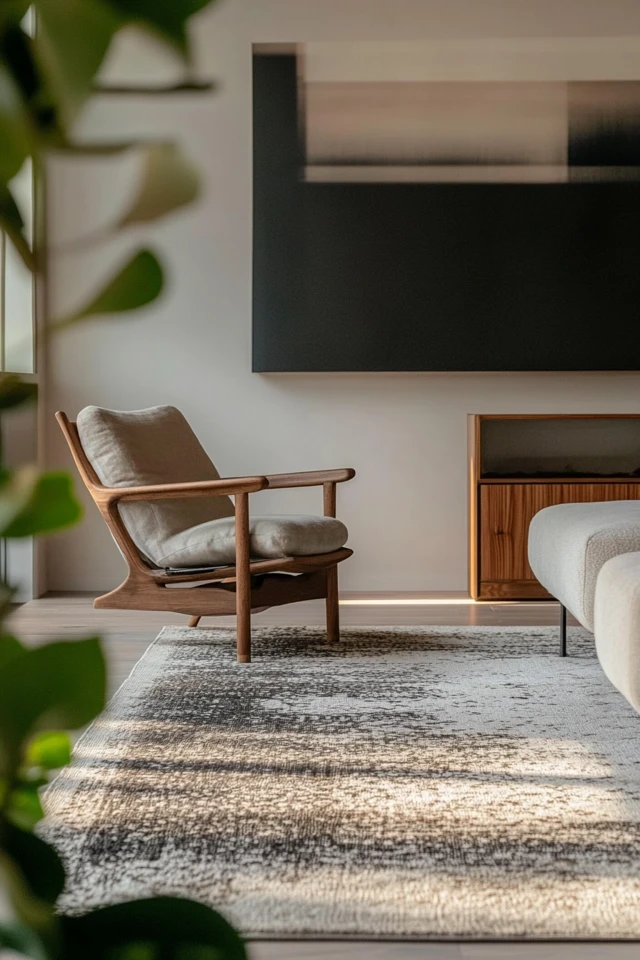Rugs are one of the most versatile and impactful elements in interior design. Not only do they anchor a room, but they also add texture, warmth, and character to your living spaces. Whether you’re creating a cozy nook in your living room, defining a dining area, or bringing life to a neutral space, the right rug can transform the vibe of the entire room.
I still remember the first time I used a chunky, handwoven rug in a minimalist living room. The contrast of its soft, tactile texture against the sleek furniture was incredible—it instantly made the space feel inviting and complete. Since then, I’ve fallen in love with using rugs as design tools to add depth and personality.
In this guide, we’ll explore the best types of rugs for adding texture to your living spaces, and I’ll share tips on choosing the perfect rug for your home.
Why Texture Matters in Rugs
Texture plays a key role in making a space feel layered and visually interesting. Rugs with different textures:
- Add depth and contrast to flat surfaces like hardwood or tile floors.
- Create a cozy, tactile element that invites relaxation.
- Enhance your design style by complementing or contrasting other materials in the room.
Types of Textured Rugs
1. Wool Rugs
Wool rugs are a classic choice for their softness, durability, and natural texture.
- Why They Work: The dense pile of wool rugs feels luxurious underfoot and adds subtle texture without overpowering the room.
- Best For: Living rooms, bedrooms, and high-traffic areas.
- Style Pairing: Works beautifully in traditional, bohemian, or modern spaces.
Pro Tip: Look for hand-tufted or hand-knotted wool rugs for a higher-quality, artisanal finish.
2. Jute and Sisal Rugs
Jute and sisal rugs are made from natural fibers, offering an earthy, organic feel.
- Why They Work: Their rough texture adds a rustic, natural element to your space.
- Best For: Coastal, farmhouse, or bohemian interiors; use in living rooms or entryways.
- Style Pairing: Pair with plush cushions or throws to balance the ruggedness.
Pro Tip: Layer a jute or sisal rug with a smaller, softer rug on top for added dimension.
3. Shag Rugs
Shag rugs are known for their deep, fluffy pile, making them incredibly soft and inviting.
- Why They Work: Their plush texture creates a cozy and luxurious vibe.
- Best For: Bedrooms, living rooms, or areas where comfort is key.
- Style Pairing: Mid-century modern, boho-chic, or eclectic interiors.
Pro Tip: Opt for a neutral shag rug in small spaces to keep the room feeling open while still adding texture.
4. Moroccan Rugs
Moroccan rugs, often handwoven, feature intricate patterns and a combination of flatweave and plush textures.
- Why They Work: The mix of patterns and pile height adds a rich, dynamic texture to any space.
- Best For: Layering in bohemian, modern, or eclectic interiors.
- Style Pairing: Pair with minimalist furniture to let the rug shine as a focal point.
Pro Tip: Look for Beni Ourain rugs with geometric designs for a timeless, versatile option.
5. Kilim Rugs
Kilim rugs are flatwoven and often feature bold, colorful patterns.
- Why They Work: Their lightweight texture contrasts beautifully with plush furniture or heavy wooden pieces.
- Best For: Living rooms, dining rooms, or entryways.
- Style Pairing: Great for global, vintage, or eclectic interiors.
Pro Tip: Use kilim rugs as wall hangings for added texture on vertical surfaces.
6. Chunky Knit or Woven Rugs
Chunky knit or woven rugs feature oversized textures that make a bold statement.
- Why They Work: Their exaggerated texture adds visual weight and tactile appeal to a space.
- Best For: Cozy living rooms or bedrooms.
- Style Pairing: Scandinavian, rustic, or contemporary interiors.
Pro Tip: Choose a light, neutral tone to keep the look modern and clean.
7. Faux Fur Rugs
Faux fur rugs mimic the softness of animal hides without the ethical concerns.
- Why They Work: Their fluffy, luxurious texture adds warmth and softness to hard surfaces.
- Best For: Accent rugs in bedrooms, reading nooks, or over chairs.
- Style Pairing: Glam, Scandinavian, or modern interiors.
Pro Tip: Drape a faux fur rug over a chair or bench for a touch of cozy elegance.
8. Braided Rugs
Braided rugs are made by twisting fibers into circular or oval patterns, creating a unique, tactile look.
- Why They Work: Their texture is both playful and casual, perfect for adding charm to informal spaces.
- Best For: Kitchens, sunrooms, or kids’ rooms.
- Style Pairing: Farmhouse, coastal, or vintage-inspired interiors.
Pro Tip: Opt for braided rugs in bright colors to add vibrancy to neutral spaces.
9. Distressed Vintage Rugs
Vintage or distressed rugs feature faded patterns and worn textures that evoke a sense of history.
- Why They Work: Their subtle texture adds depth without overwhelming the space.
- Best For: Formal living rooms, dining rooms, or studies.
- Style Pairing: Traditional, eclectic, or industrial interiors.
Pro Tip: Pair vintage rugs with modern furniture for a stylish juxtaposition.
10. Patterned Textured Rugs
Patterned textured rugs combine raised designs with flatweave sections for a multi-dimensional effect.
- Why They Work: The mix of textures and patterns adds interest to minimalist or monochromatic rooms.
- Best For: Accent areas like under coffee tables or at the foot of a bed.
- Style Pairing: Works well in modern, transitional, or eclectic interiors.
Pro Tip: Choose patterns with neutral colors for a subtle, sophisticated look.
Picture Gallery
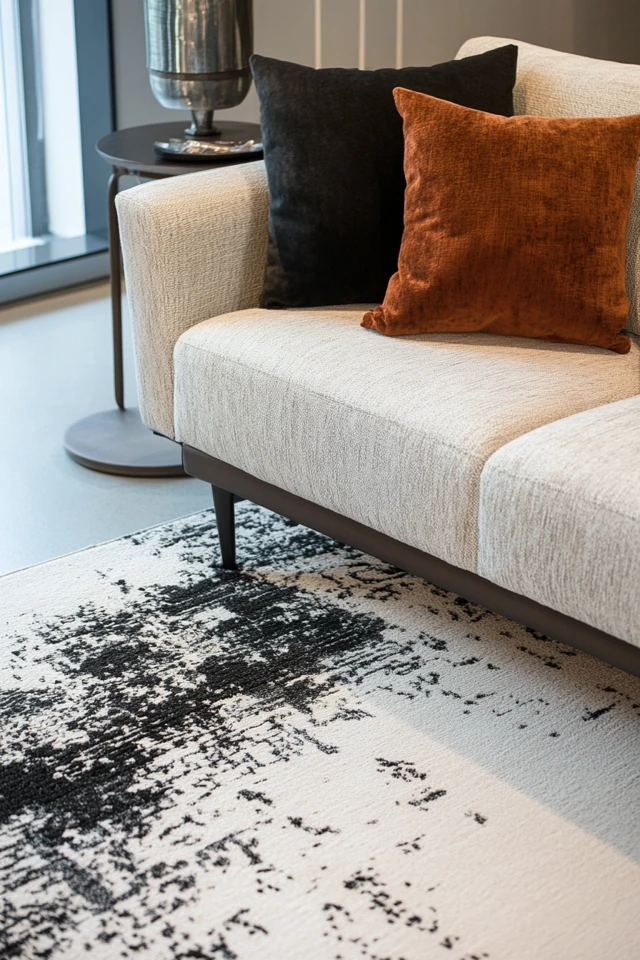

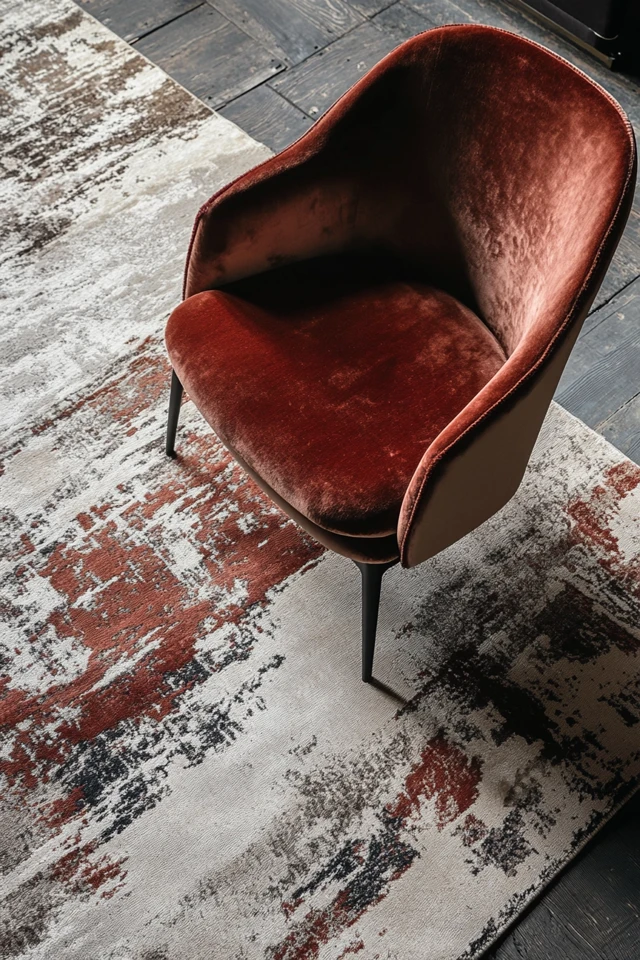
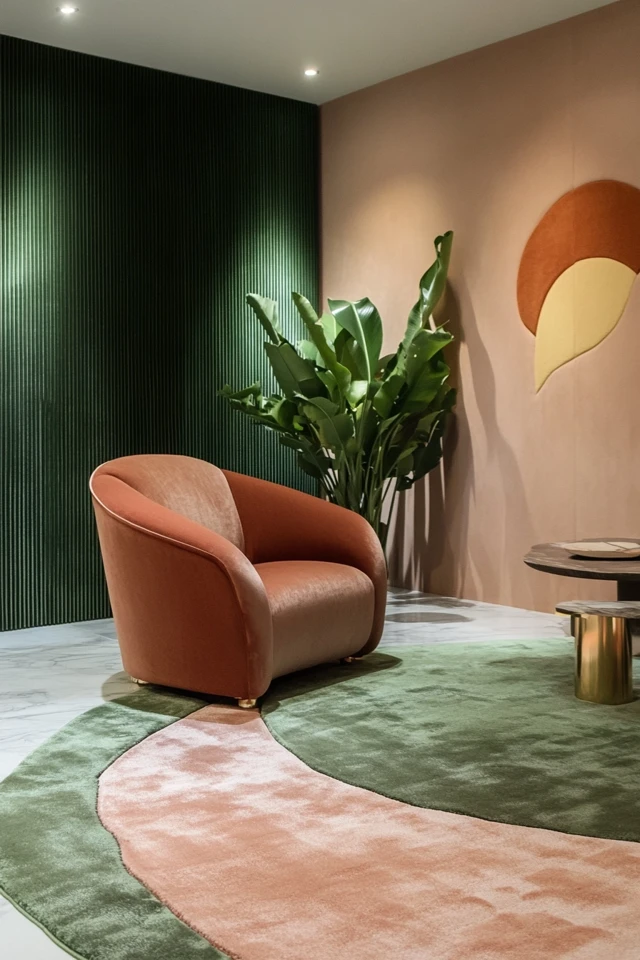
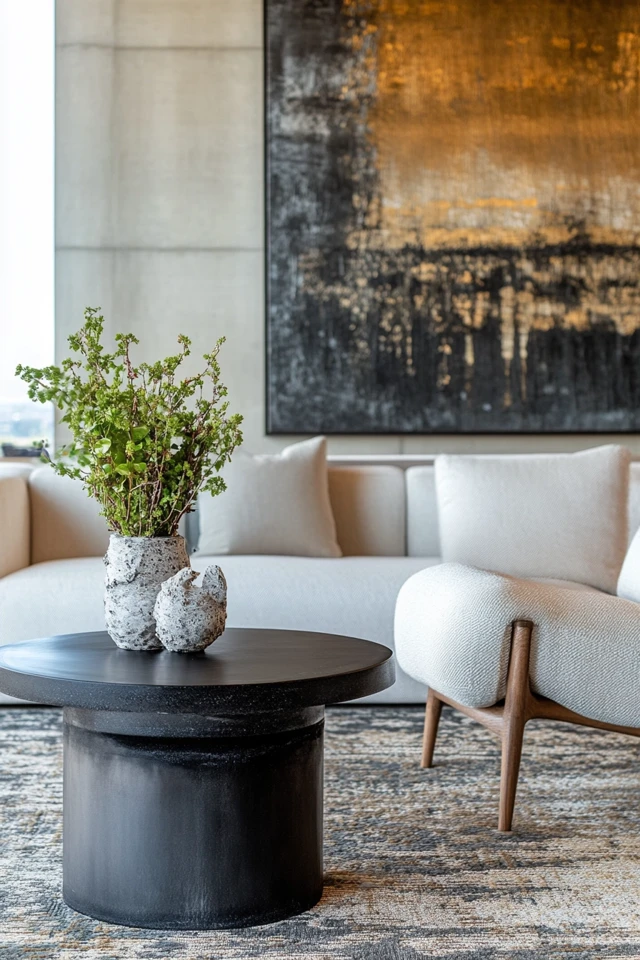

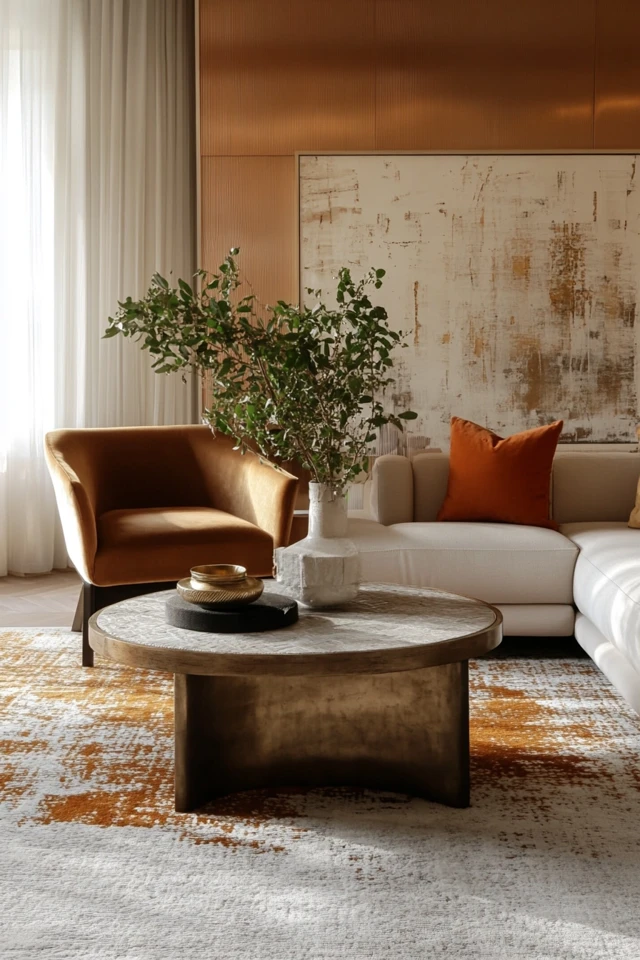
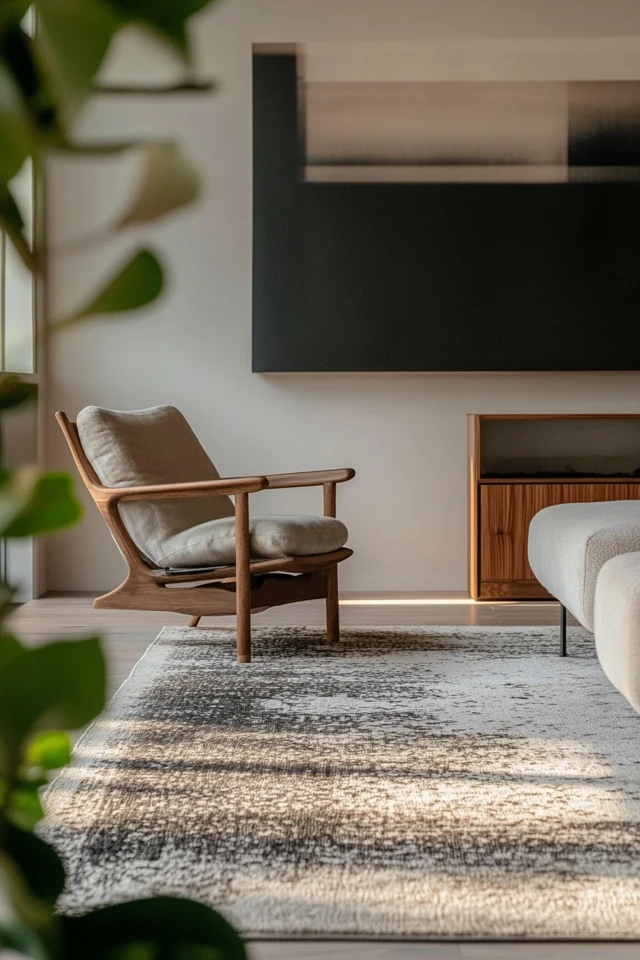
How to Choose the Right Rug for Your Space
1. Consider the Size
- In living rooms, choose a rug large enough for all furniture legs to rest on it, or at least the front legs.
- For dining rooms, ensure the rug extends beyond the chairs when pulled out.
2. Match the Texture to the Room’s Function
- Use soft, plush rugs like shag or wool in cozy spaces like bedrooms or reading nooks.
- Opt for durable, easy-to-clean options like jute or flatweave rugs in high-traffic areas.
3. Balance the Room’s Elements
- If your furniture is sleek and minimal, add a heavily textured rug for contrast.
- In rooms with busy patterns, choose a simpler rug to avoid overwhelming the space.
4. Layer Rugs for Depth
- Pair a smaller patterned rug over a larger, neutral jute or sisal rug to create layers of texture.
5. Choose Colors Wisely
- Neutral-colored rugs work well in most spaces and allow other design elements to shine.
- Bold colors or patterns can act as a focal point in neutral rooms.
Conclusion
Rugs are one of the easiest and most effective ways to add texture to your living spaces. Whether you’re drawn to the softness of wool, the rustic appeal of jute, or the intricate patterns of Moroccan designs, there’s a textured rug to suit every style and function. By carefully selecting the right material, size, and style, you can create a space that feels warm, inviting, and full of character.
Ready to transform your living spaces? Start with the perfect textured rug and watch your room come to life.
FAQs
1. What type of rug is best for high-traffic areas?
Flatweave rugs like kilim, jute, or sisal are durable and easy to clean, making them ideal for high-traffic areas.
2. How do I clean a textured rug?
Vacuum regularly to remove dirt and debris. For deeper cleaning, follow the manufacturer’s care instructions or hire a professional cleaner.
3. Can I layer rugs with different textures?
Yes! Layering rugs is a great way to add depth. For example, pair a soft wool rug over a jute or sisal base.
4. What’s the best rug for a cozy living room?
Shag rugs or wool rugs are perfect for creating a warm, inviting atmosphere in a living room.
5. Where can I find affordable textured rugs?
Retailers like IKEA, Wayfair, Target, and HomeGoods offer a wide range of affordable textured rugs for every style.

